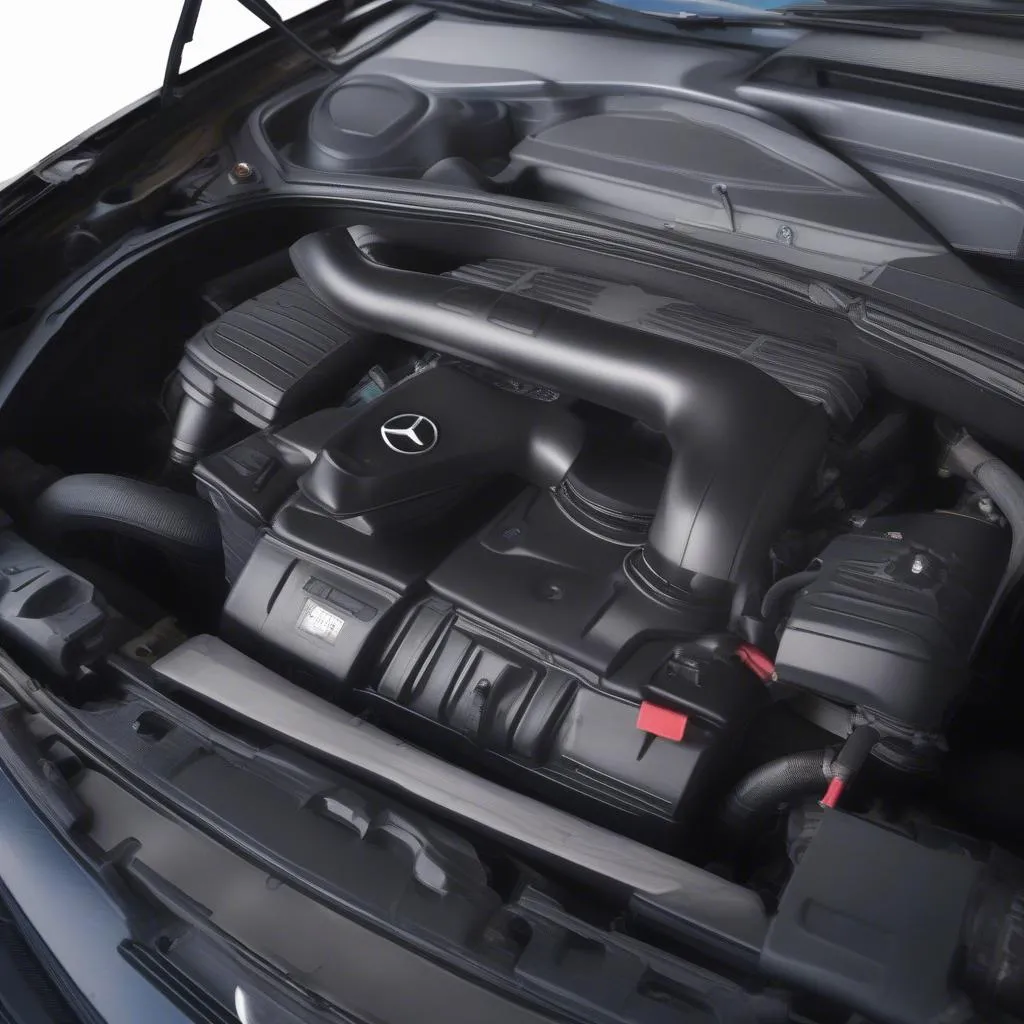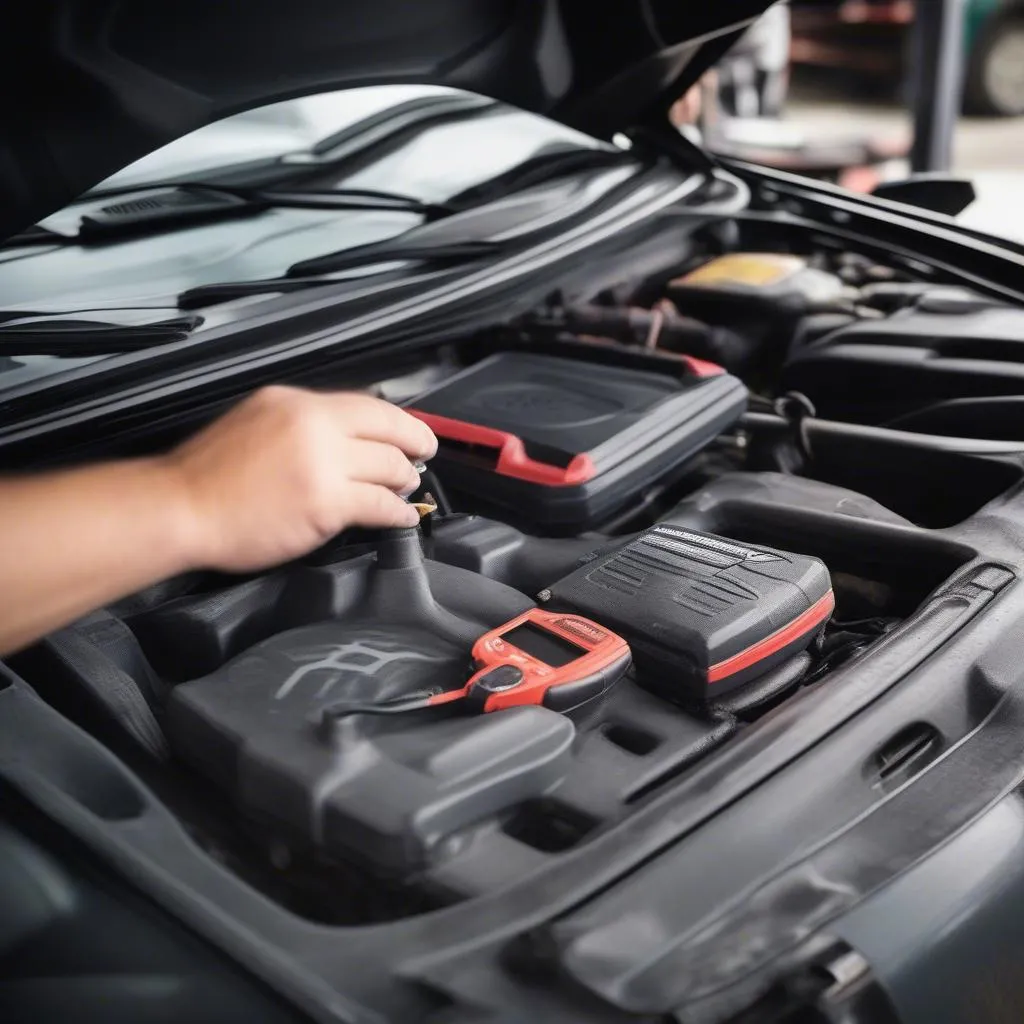Is your Mercedes engine overheating? Does the cooling fan seem like it’s not kicking in? A malfunctioning engine cooling fan is a common issue in Mercedes vehicles, and it can lead to serious engine damage if left unaddressed. This guide will walk you through the common causes, symptoms, and solutions for a Mercedes engine cooling fan fix.
Understanding the Problem
Before we dive into the fixes, it’s essential to understand why your Mercedes engine cooling fan might not be working correctly.
Common Causes of Engine Cooling Fan Failure:
- Faulty Fan Clutch: The fan clutch engages and disengages the fan based on engine temperature. A worn-out clutch can fail to engage the fan, leading to overheating.
- Defective Fan Motor: In vehicles with electric cooling fans, a malfunctioning fan motor can prevent the fan from spinning, resulting in poor cooling.
- Blown Fuse or Relay: A blown fuse or a faulty relay in the cooling fan circuit can interrupt power supply to the fan.
- Coolant Temperature Sensor Issues: A faulty coolant temperature sensor can send incorrect readings to the engine control unit (ECU), preventing it from activating the fan at the right time.
- Wiring Problems: Damaged or corroded wiring within the cooling fan circuit can disrupt the flow of electricity.
Identifying the Issue
Recognizing the signs of a failing cooling fan is crucial for preventing further engine damage. Here’s what to look out for:
- Engine Overheating: This is the most obvious symptom. If your temperature gauge consistently climbs into the red zone, it’s a clear indicator of a cooling system problem, possibly related to the fan.
- Loud Noises from the Engine Bay: A failing fan clutch might produce a roaring or grinding noise, especially when the engine is hot.
- Fan Not Spinning or Spinning Slowly: Visually inspect the fan while the engine is running. If it’s not spinning or rotating slowly, even when the engine is hot, there might be an issue with the fan motor, clutch, or electrical components.
Gathering the Necessary Tools and Equipment
Before you begin any repair work, it’s essential to have the right tools and equipment on hand:
- Socket Set and Wrenches: For removing and installing bolts and nuts.
- Screwdrivers: For disconnecting electrical connectors and removing plastic covers.
- Cooling System Pressure Tester: To check for leaks in the cooling system.
- Multimeter: For testing electrical components like the fan motor, fuse, and relay.
- New Cooling Fan Components (if needed): This might include a new fan clutch, fan motor, fuse, or relay, depending on the diagnosed problem.
- Coolant: You might need to top off or replace the coolant after working on the cooling system.
Mercedes Engine Cooling Fan Fix: Step-by-Step Guide
The repair procedure will vary depending on the specific cause of the problem. Below are some general steps to troubleshoot and fix common cooling fan issues:
1. Check the Fuse and Relay:
- Locate the cooling fan fuse and relay in the fuse box (refer to your owner’s manual).
- Visually inspect the fuse for any signs of a blown element.
- Use a multimeter to test the relay for continuity.
- Replace any faulty components.
2. Inspect the Fan Clutch (if applicable):
- With the engine off and cool, try to spin the fan by hand. There should be some resistance. If the fan spins freely, the clutch might be worn out and needs replacement.
3. Test the Coolant Temperature Sensor:
- Locate the sensor on the engine block or radiator (refer to your owner’s manual).
- Disconnect the electrical connector and use a multimeter to test its resistance. Compare the readings to the manufacturer’s specifications.
- Replace the sensor if the readings are out of range.
4. Examine the Wiring Harness:
- Visually inspect the wiring harness leading to the fan motor, clutch, and other related components for any signs of damage, corrosion, or loose connections.
- Repair or replace any damaged wiring as needed.
5. Test the Fan Motor (if applicable):
- Disconnect the electrical connector to the fan motor.
- Use a multimeter to test the motor for continuity and resistance.
- If the motor fails the test, it will need to be replaced.
 Mercedes Cooling Fan Location
Mercedes Cooling Fan Location
FAQs: Mercedes Engine Cooling Fan Issues
Q: How often should the engine cooling fan come on?
A: The frequency varies depending on factors like ambient temperature, engine load, and driving conditions. However, if your fan runs constantly or not at all, it’s essential to have it checked by a mechanic.
Q: Can I drive my Mercedes with a broken cooling fan?
A: It’s highly discouraged. Driving with a faulty cooling fan can lead to severe engine damage due to overheating.
Q: Can I use a diagnostic tool to troubleshoot cooling fan problems?
A: Yes, a professional-grade diagnostic scanner, like those offered by Cardiagtech, can retrieve fault codes from the ECU, providing insights into the root cause of the cooling fan malfunction.
 Mercedes Engine Cooling Fan Diagnosis
Mercedes Engine Cooling Fan Diagnosis
In Conclusion
Addressing a Mercedes engine cooling fan issue promptly is crucial for maintaining your vehicle’s health and preventing costly engine repairs. While some fixes can be performed with basic mechanical skills, it’s always recommended to consult a qualified Mercedes mechanic for accurate diagnosis and repair. For high-quality diagnostic tools and resources, explore the offerings at CARDIAGTECH.
Remember, regular maintenance and inspections are key to keeping your Mercedes running smoothly and avoiding unexpected breakdowns.


